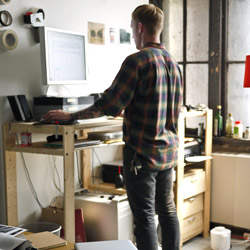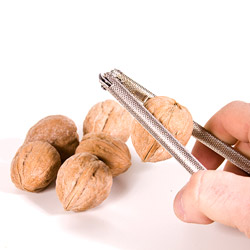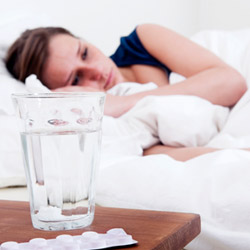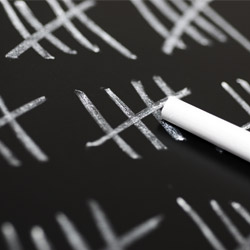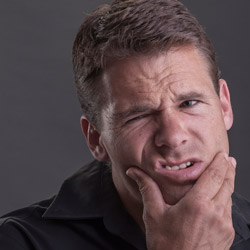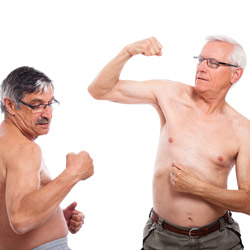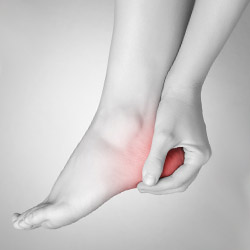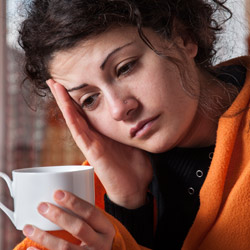To sit or to stand? Well they both come with advantages and disadvantages. Although standing desks are widely promoted through new age offices, they have some significant downsides which can lead to injuries that are less common than sitting desks. Here’s what to look out for…
Is it Healthy to Wear Skinny Jeans?
Recently, a poor girl ended up in hospital due to skinny jeans. In short, her skinny jeans weren’t the best apparel choice for her repetitive lifting activity – and she was taken to hospital with nerve damage and weakness in her legs.
It may sound extreme – but can skinny jeans really hurt our bodies? And why does this even happen?
Is it Safe to Crack my Own Back or Knuckles?
Well, the short answer – it’s not recommended.
Let’s start by explaining back cracking. In osteopathy and chiropractic, cracking is the colloquial term for the manipulation of joints that, due to the body’s response, can sometimes create an audible ‘popping’ sound. It’s typically used to treat lower back pain, but is also commonly used to treat neck pain. The manipulation itself is used to release pressure and tension from the joint to restore movement.
What’s the Recommended Amount of Physical Exercise?
What’s the minimum amount of recommended physical activity? It’s probably lower than you think. Here are the current Australian guidelines for physical activity…
Treating Back to Work Pains
Interestingly, over your break you may have found that that little niggle you usually have in your neck or back went away. But just as you were about to pop open another cork to celebrate, a return to work has some how coaxed the pain back. What’s that all about?
When you feel relaxed, it is easier for your body to initiate this masking compensation. Another part of the body will take on the extra work – and because your relaxed body is generally happy with the World, this adaptation passes relatively unnoticed.
Scoliosis Causes and Treatment
Scoliosis is the term used to describe a lateral curvature of the spine. This means that your spine is at some point deviated to the left or right – rather than straight down. You can have a ‘C’ curved deviation or an ‘S’ curved deviation.
Scoliosis has no single cause. It can be caused by many things. There are two classifications of scoliosis – structural and functional.
How to Find an Osteopath
So you’ve done your research, or your friend has recommended that you see an osteopath. But how do you find one?
Firstly, start with your family and friends. The best osteopathic practitioners are often the ones who your peers rave about. Chances are you hang out with people you trust. If they’ve had good experiences (or even poor experiences), your friends and family are your best port of call.
How Many Chiropractors, Osteopaths and Physiotherapists Are There in Australia?
Ever wondered how many chiropractors, osteopaths and physiotherapists there are in Australia? It’s been about 2 years since I looked at the previous osteopathy growth rate. So I’ve taken stock and crunched the numbers and created helpful charts to compare total treatments and the growth rate for all practitioners. All while using official data sources.
What is TMJ: Tempero Mandibular Joint
TMJ stands for tempero-mandibular-joint, or in layman’s terms – your jaw. Your jaw is made up of 2 bones: the temporal bone – which is a section of your skull (which is actually made up of many bones, not just one big one) – and the mandible, which is the bone that makes your chin and holds your bottom teeth.
There are many muscles that surround the jaw and attach to it. It’s actually quite a complex little joint.
Osteopath vs Chiropractor: What’s the Difference?
This is probably the most common question asked. Osteopathy and Chiropractic are similar in that both disciplines use manual therapy. Both believe that the body is a self-regulating and self-healing mechanism. In manipulating aggravated sections of the body, they are able to assist in accelerating these mechanisms. Both disciplines started in America in late 1800s – Osteopathy in 1874, then Chiropractic followed in 1895.
Osteopath: A Definition
The word osteopath derives from the latin osteo, meaning bone, and pathos, meaning disease. When osteopathy was first founded by Dr Andrew Taylor Still in 1874 in Kansas, USA, he was dubbed a “lightning bone-setter”. Dr Still was a conventional medical doctor who became frustrated with his profession after his 3 children fell perilously ill to spinal meningitis. He made it his life’s work to study the anatomy of the body and work out a better way to fight disease.
Foot Pain and Osteopathy
Let’s talk about feet. Everyone knows the fact that together, our feet carry the most bones in our body (26 in each foot), though our hands aren’t far behind (19 bones in each hand, not including the wrist which has 8 bones in each). Why do we need so many bones in our feet?
Our feet act to give us balance and hold us upright. In order to carry our body, our feet need a certain degree of movement through them to allow for change of weight bearing through the motion of walking or running. Our lower limb is more complex than you would think, with not only all those bones involved, but also all the muscle attachments which allow us to move in the way we do.
Sciatic Pain and Osteopathy
Sciatica is pain that is caused by irritation of the sciatic nerve, which is in your lower back, extending down your legs. Its characteristics are of pain in the lower back with possible referral into the upper posterior thigh to the knee. It can sometimes extend as far down as the sole of your foot.
Osteopathy and Pregnancy
Pregnancy can be a wonderful time in a woman’s life. Not only does it herald change to your family life, but it can be a time of great reflection. The physical side of pregnancy can vary. You hear about those who go through pregnancy with no morning sickness and no pain, the whole thing is just a breeze. Lucky them. Most pregnancies will bring both positive and some negative physical symptoms.
Cold Weather and Your Pains
Winter time in Melbourne – brrr! That cold weather really brings out those aches and pains. We’ve tried beating the Winter blues, but sometimes the aches and pains just keep on getting to us. So why does this happen? The answer is never simply black and white, but there can be some simple explanations for that niggling back pain that … Read More

